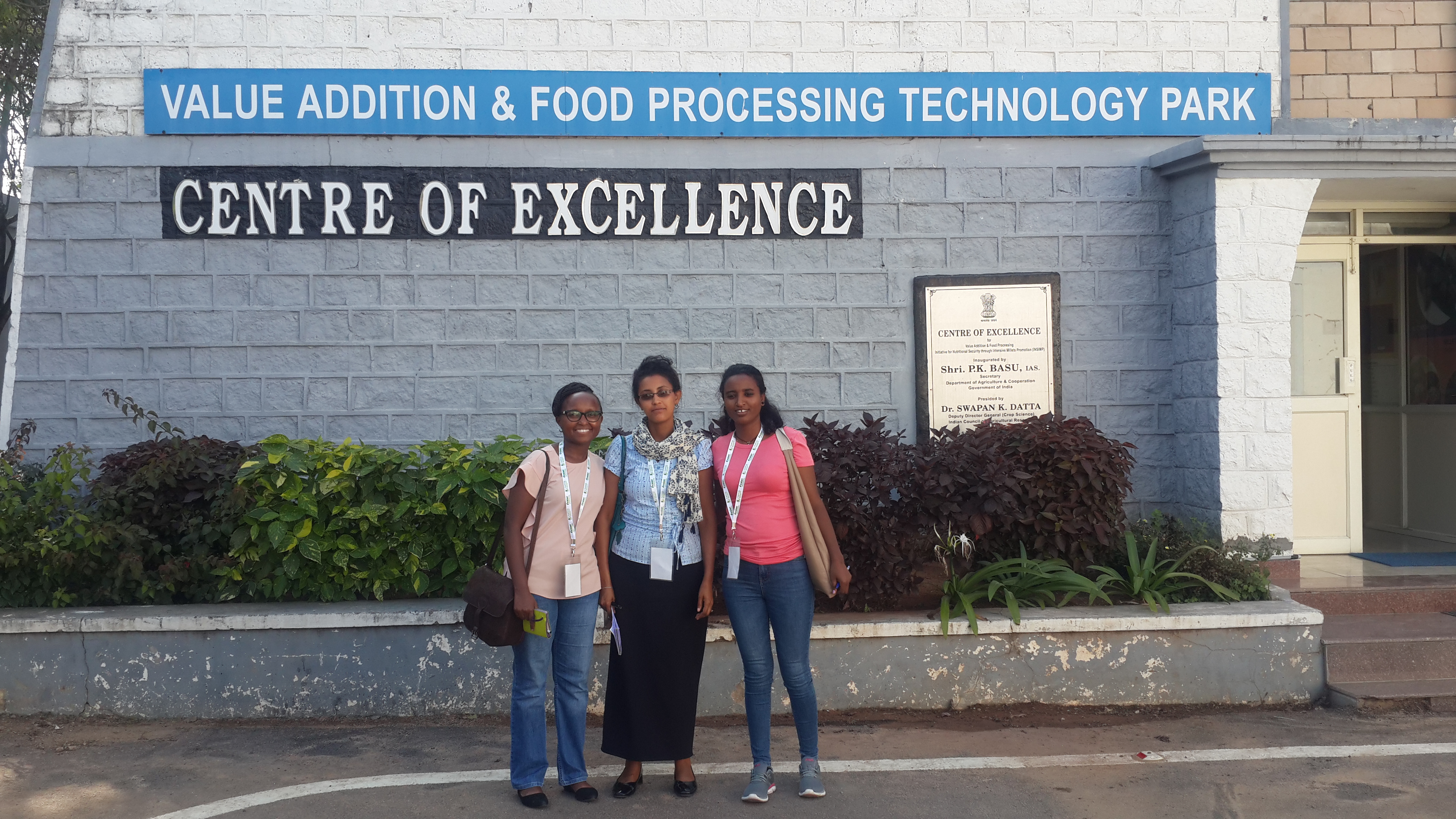Submitted by Sarah Bailey on Thu, 13/02/2020 - 10:31
At the recent TIGR2ESS General Assembly at ICRISAT, Hyderabad we were joined by Dr Hirut Assaye Cherie and and her PhD student Helen Walle Endalew from Bahir Dar University in Ethiopia. Hirut and Helen are partners on MillNETi, a sister project to TIGR2ESS which aims to improve the iron nutrition status of people living in Ethiopia and The Gambia. As a sister project, MillNETi will build on learnings from India, and help build research links between India, The Gambia and Ethiopia. Here, Hirut and Helen discuss their takeaways from a week at ICRISAT.
We were given the opportunity to spend a week at ICRISAT in Hyderabad through the TIGR2ESS Exchange fund. Whilst we were there, we attended training sessions, took part in the TIGR2ESS General Assembly, and were inspired by the facilities and ideas which we saw at both ICRISAT and the Institute for Millet Research. All the visits and meetings gave us a chance to learn about the research people are doing in the two institutes to improve the health and livelihood of their communities. The visit also helped us to identify areas for future collaborations and we even identified activities which can be included in our current project.
Learning from TIGR2ESS
At the start of the exchange, we attended a two-day workshop on journal article and grant proposal writing. We really enjoyed the workshop as it was participatory and the points raised helped us to realize the most common mistakes we usually make when writing journal articles and grant proposals.
Over the next two days, once the training sessions had finished, we had a chance to attend the opening of the TIGR2ESS General Assembly and various PDRA presentations. We took away several learnings from the General Assembly, including how to present research findings very concisely, how to work with people from different backgrounds and how to present research findings to beneficiaries. The exchange also helped us to identify possible research areas and problems which could be addressed in Ethiopia.
Inspiration from ICRISAT
Whilst in Hyderabad we also had a chance to visit different departments and meet new people and researchers at ICRISAT. This included people from the Smart Foods team, the Agribusiness and Innovation Platform (AIP) and HarvestPlus.
Millets in Ethiopia are mainly used to prepare ‘injera’ and some local alcoholic beverages. Our project component of MillNETi (FP3) in Ethiopia mainly focuses on studying the fermentation kinetics and bioavailability of iron during the fermentation of millets (which usually takes four to five days) in the preparation of Injera, a sour flat bread staple in Ethiopia. We were therefore interested to learn how the Indian market for millets has grown, and how they are proving beneficial for nutrition.
From the Smart Foods team, we learned about their food product development targeting malnourished children and adolescents and addressing the challenge of iron deficiency through school feeding programs with millet. We believe this is something that can be implemented in Ethiopia.
At the AIP we saw a range of millet processing technologies, and were inspired by the range of millet products that had been developed for consumers.
On the last day of the exchange, we left the ICRISAT campus to visit the International Millet Research Institute (IMR). Whilst there we saw the gene bank, value addition and food processing park as well as their nutri-cereals innovation centre.
The work being done by researchers from AIP of ICRISAT and Nutri-cereals Innovation Center of IMR (creating incubation space, providing business related trainings, developing and delivering food related technologies for entrepreneurs) is a very good platform that can be directly translated in Ethiopia to engage many jobless graduates in the food processing sector – unemployment is a big problem.
The visit helped us to see the different type of foods and businesses that can be developed from millets. This is definitely something which should be done in Ethiopia and will be addressed through our current project - MillNETi.
Outputs of the exchange
The exchange helped us to establish new contacts and identify areas of collaboration. We really appreciate the trouble taken by Joanna from MillNETi, Marla, Aakriti and Sarah from TIGR2ESS and Lara from the Centre for Global Equality took to introduce us to interesting people. We also now have a clear understanding of how to write appropriate journal articles and grant proposals. Moreover, the exchange helped us revisit our current project and include some activities to make the project more comprehensive. In general, the exchange was an eye opening experience for us since there were many situations when we said ‘Ah, we wish this could be done in Ethiopia’!

